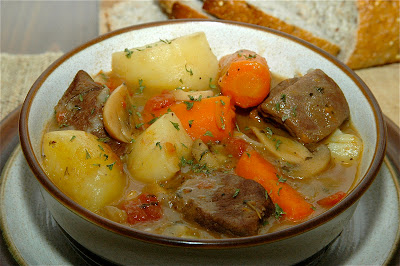“It’s time to go down into the cave house and get some potatoes, carrots and other root vegetables and make a beef stew.”
That’s a statement that you don’t hear too often today. Not many root cellars survive today and
most people have no idea what one is.
A large root cellar was a part of the Latshaw Farm on Wall Street in
Spring City. Aunt Sara and Uncle
Russell always referred to it as the “cave house.” In their backyard was a mound of earth with two terracotta
pipes protruding from the top. If
you shouted down those pipes you could make all kinds of echo-ey ghoulish
sounds. It was great fun to take
an unsuspecting cousin and have them listen for the “monster” at one pipe while
you provided the sound effects at the other.
The cave house was accessed through an adjacent shed. Behind a wooden door was a full flight
of stairs taking you down into the earth.
A single clear incandescent light bulb illuminated the storage room at
the bottom of the steps. It was a
tubular dome-shaped room with a concrete floor and plastered walls and ceiling. The walls were lined with wooden
benches upon which were peach baskets of potatoes, apples, turnips as well as
any other fall-harvested vegetables that kept well in the constant 54°
temperature. It was a great place
to explore on a hot summer afternoon.
Beef was one of Aunt Sara’s favorite foods. Family dinners she hosted almost always
included beef as the main course. Each
year, she would have a steer butchered and the labeled packages wrapped in
white butcher paper would be stacked in her chest freezer. The beef she served was always tender,
moist, and flavorful.
This version of beef stew is a compilation of a number of
recipes I’ve used over the years, and is probably one of the simplest to
prepare. It’s not a dish that you
can have on the table in 20 minutes.
While the actual prep and hands-on cooking time takes less than 20
minutes, allowing beef stew to simmer for a couple of hours will make all the
difference.
BEEF STEW
(click on any image to enlarge it)
Ingredients:
1½ - 2 lbs. stew beef
1-2 Tablespoons cooking oil (olive, grape seed, or canola)
2 medium onions, chopped
1/3 cup all-purpose flour
½ teaspoon Kosher salt (add more, to taste)
¼ teaspoon ground black pepper (add more, to taste)
1 teaspoon dried basil
½ teaspoon dried rosemary leaves
3 bay leaves
2 Tablespoons dried parsley flakes
5 fresh plum tomatoes, peeled, de-seeded, & chopped, or
2 cans diced tomatoes
5 large carrots, peeled, cut in 1” to 1½” pieces
6 medium potatoes, peeled, cut into 1½” to 2” pieces
2 cans sliced mushrooms
3 cans beef broth (approx. 46 oz.)
Begin to brown the beef cubes in the oil over medium
heat.
Chop the onions and add to the beef, along with the salt and pepper.
When the onions begin to soften and the beef has mostly browned, add the flour and incorporate it until it is moistened and fairly smooth. Most of it will stick to the beef cubes.
Chop the onions and add to the beef, along with the salt and pepper.
When the onions begin to soften and the beef has mostly browned, add the flour and incorporate it until it is moistened and fairly smooth. Most of it will stick to the beef cubes.
Add the beef broth and diced tomatoes and bring up to a simmer, (just below a
boil). Allowing the stew to simmer
for two hours will allow the flavors to blend and will tenderize the meat.
Prepare the potatoes and carrots by peeling and cutting them into larger, stew-size chunks. Add them to the stew when ready, along with the remaining ingredients. Stir occasionally, and as the liquid evaporates, add water to maintain the original level. Keep the pot covered will slow evaporation.
Prepare the potatoes and carrots by peeling and cutting them into larger, stew-size chunks. Add them to the stew when ready, along with the remaining ingredients. Stir occasionally, and as the liquid evaporates, add water to maintain the original level. Keep the pot covered will slow evaporation.
Crusty bread with butter is a great complement to a one-pot
meal like beef stew. I’d be
interested to hear about your favorite beef stew recipes. Send them to me at drwillauer@gmail.com.
Enjoy!







No comments:
Post a Comment